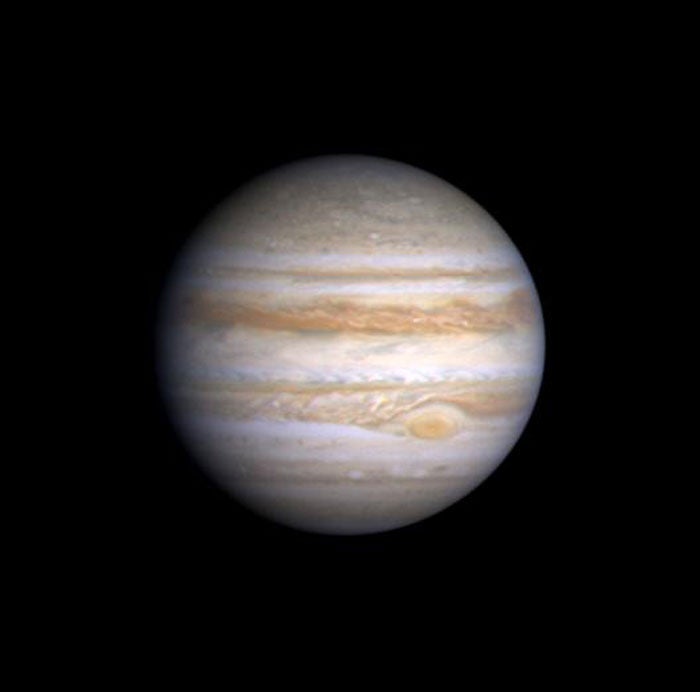The differences between the light-colored regions, known as zones, and the dark-colored ones, known as belts, depend on the organization of the winds in Jupiter’s atmosphere. Unlike the terrestrial planets (Mercury, Venus, Earth, and Mars), the outer planets are larger and rotate faster. Two main forces dominate their motions: centrifugal, which causes their shapes to be oblate rather than spherical, and Coriolis, which makes it much harder for material to move north or south compared with east or west. As a result, east-west atmospheric jets are mostly responsible for the motions of Jupiter’s winds, which move at different speeds at different latitudes. We’re not sure exactly what causes the jets, but data from the Galileo probe’s 1995 Jupiter visit show us that they’re quite steady down to many atmospheres of pressure.
The boundaries between belts and zones are coincident with peaks or troughs in the east-west jets. The light-colored zones have an eastward jet on the side closest to the pole and a westward one on the side nearest the equator. For the dark-colored belts, the situation is reversed. We think the zones appear bright because high-altitude clouds composed largely of colorless icy particles cover them. These clouds are similar to cirrus clouds in Earth’s atmosphere, except that Jupiter’s likely contain a lot of ammonia ice, not water ice. The darker belts also have upper-level ice clouds at similar altitudes, but they are much thinner and the particles in them are much darker; these clouds contain less ammonia.
In August 2011, NASA launched the Juno mission to further analyze the giant planet. One of the project’s main goals, once it arrives at Jupiter in July 2016, is to probe farther down into the planet’s atmosphere to understand how deep and how strong the differences between belts and zones extend. — Glenn Orton, NASA’s Jet Propulsion Laboratory, California Institute of Technology, Pasadena
The boundaries between belts and zones are coincident with peaks or troughs in the east-west jets. The light-colored zones have an eastward jet on the side closest to the pole and a westward one on the side nearest the equator. For the dark-colored belts, the situation is reversed. We think the zones appear bright because high-altitude clouds composed largely of colorless icy particles cover them. These clouds are similar to cirrus clouds in Earth’s atmosphere, except that Jupiter’s likely contain a lot of ammonia ice, not water ice. The darker belts also have upper-level ice clouds at similar altitudes, but they are much thinner and the particles in them are much darker; these clouds contain less ammonia.
In August 2011, NASA launched the Juno mission to further analyze the giant planet. One of the project’s main goals, once it arrives at Jupiter in July 2016, is to probe farther down into the planet’s atmosphere to understand how deep and how strong the differences between belts and zones extend. — Glenn Orton, NASA’s Jet Propulsion Laboratory, California Institute of Technology, Pasadena










